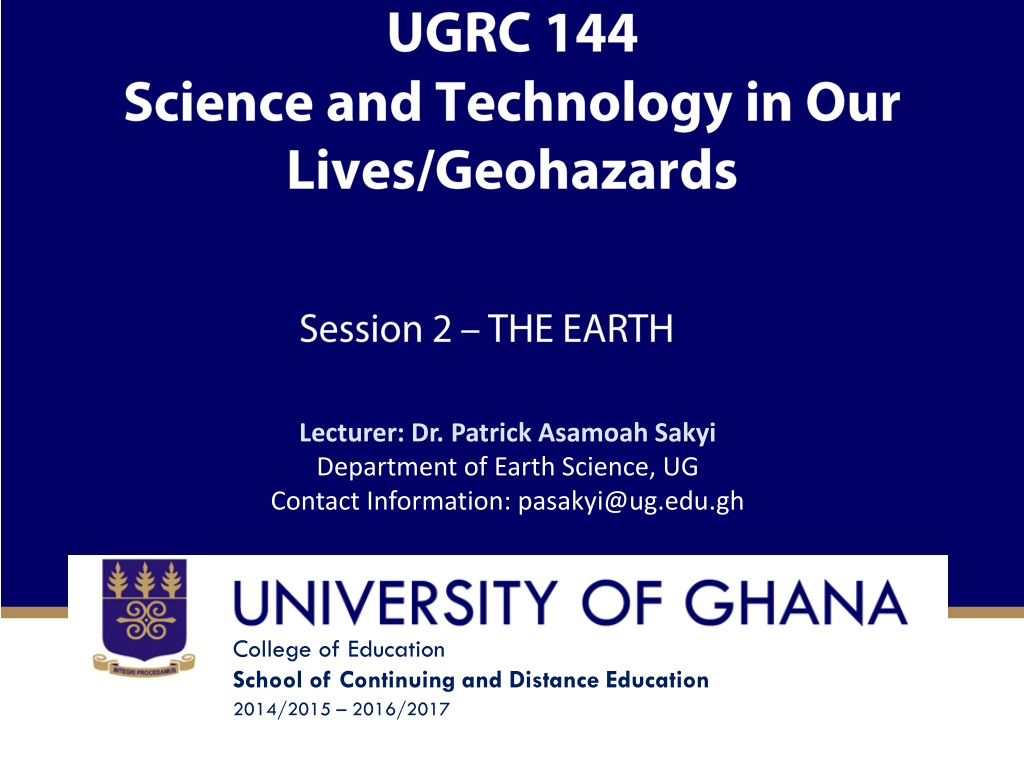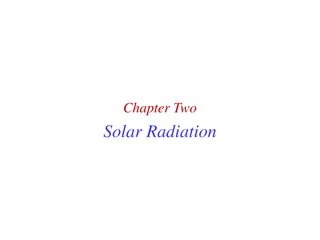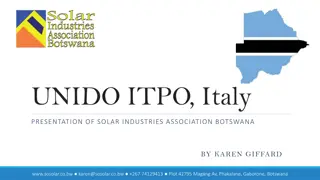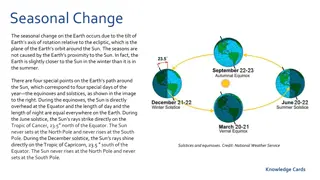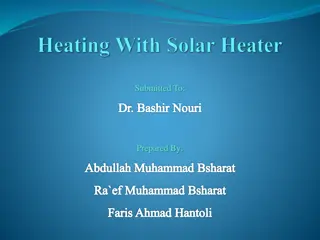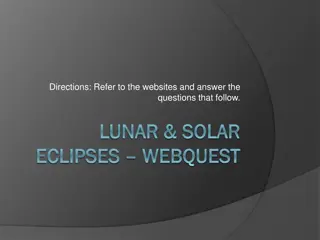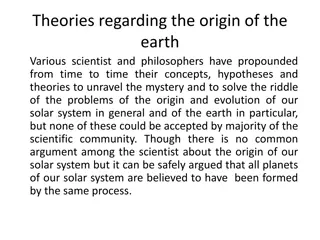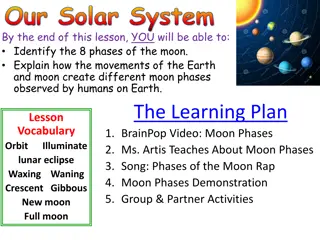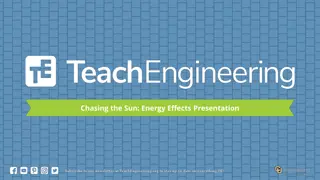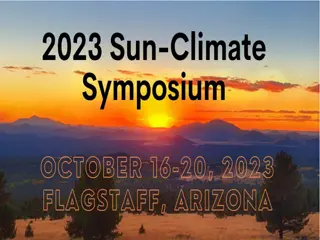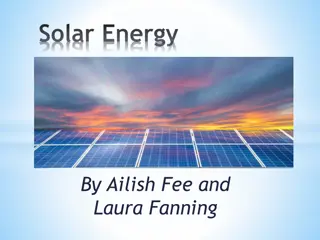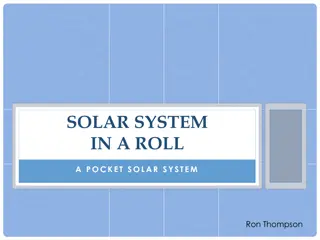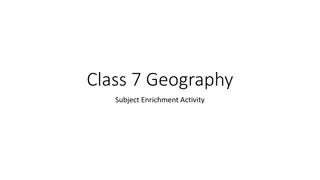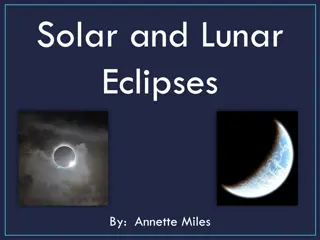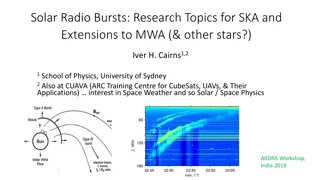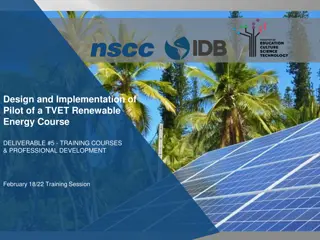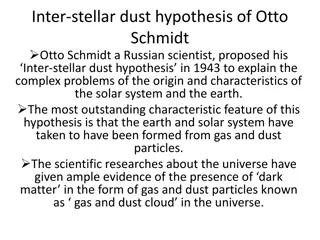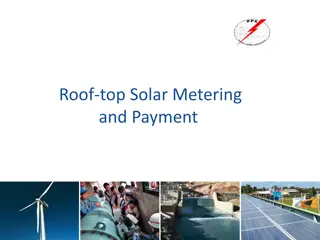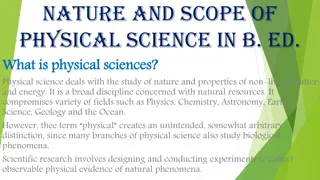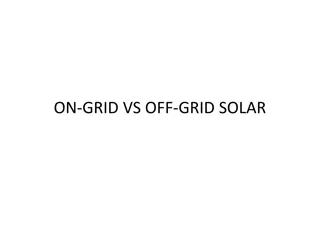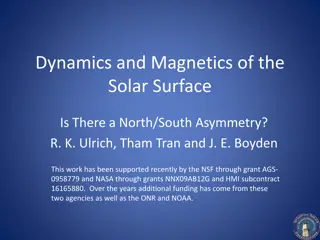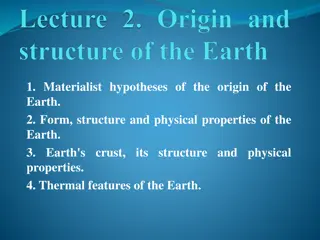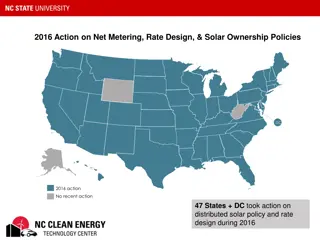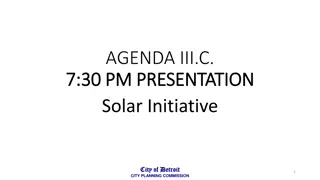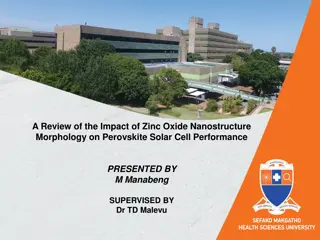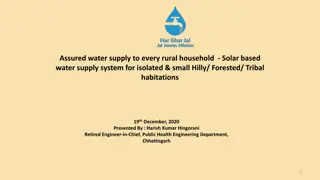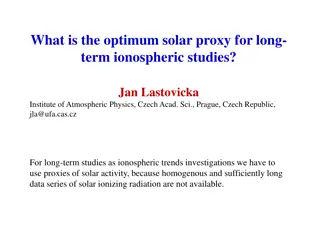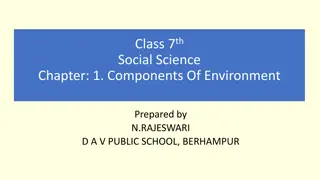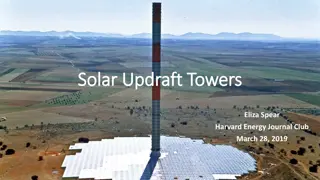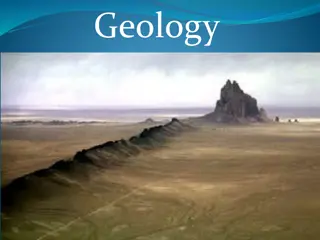Understanding Earth Science: Exploring the Solar System and Physical Environment
Delve into the realm of Earth science with Dr. Patrick Asamoah Sakyi to explore topics like the Solar System, Earth's physical environment, and the structure of the Earth's interior. Gain insights into our planet's place in the universe and its dynamic nature throughout geological time.
Download Presentation

Please find below an Image/Link to download the presentation.
The content on the website is provided AS IS for your information and personal use only. It may not be sold, licensed, or shared on other websites without obtaining consent from the author. Download presentation by click this link. If you encounter any issues during the download, it is possible that the publisher has removed the file from their server.
E N D
Presentation Transcript
Lecturer: Dr. Patrick Asamoah Sakyi Department of Earth Science, UG Contact Information: pasakyi@ug.edu.gh College of Education School of Continuing and Distance Education 2014/2015 2016/2017
Session Overview The Earth is a huge sphere covered with water, rock and soil, and is surrounded by air. Earth is part of the Solar System. It is one of eight planets that travel through space around the sun. The solar system consists of a star called the SUN and all bodies that orbit the Sun. 2
Session Outline The key topics to be covered in the session are as follows: The Solar System The Earth s Physical Environment The structure of the earth s interior and its relationships to earthquakes. 3
Reading List Read Chapter 1 of Environmental Geology 4th Edition by Carla W Montgomery (1995) Read Unit 1, Section 2 of UGRC 140 II Geohazards Institute of Continuing and Distance Education 4
Topic One The SOLAR SYSTEM 5
The Solar System The Earth is a huge sphere covered with water, rock and soil, and is surrounded by air. Earth is part of the Solar System. It is one of eight planets that travel through space around the sun. The solar system consists of a star called the SUN and all bodies that orbit the Sun (Fig. 1.1). The sun is one of billions of stars that make up a galaxy called the Milky Way, which is also one of billions of galaxies that make up the Universe Figure 1.1: The Solar System 6
The Earth (contd) The earth ranks fifth in size among the planets and is about 150 million km from the sun. It is the only planet with an atmosphere that can support plant and animal life. In space, Earth has three main movements. It rotates or spins on its axis and this rotation causes day and night. It revolves round or orbits the sun. The Earth also moves through the Milky Way with the rest of the solar system. The orbit of the earth round the sun covers a distance of 958,000,000 km. The earth has one satellite, the moon, of diameter 3476 km. 7
Topic Two The Earth's Physical Environment 8
The Earths Physical Environment The earth is a dynamic planet, which has been changing throughout geologic time. It consists of a solid sphere surrounded by surface fluids and a magnetic force field. The Earth s physical environment is traditionally divided into three major parts, the Atmosphere, Hydrosphere Solid Earth s Surface (Land). temperature. 9
The Earths Physical Environment The atmosphere is a thin gaseous-layer made up of air, which surrounds the earth, extending up to 1,600 km above the surface. Air is made up of nitrogen, oxygen, argon and other gases. Variations in the behaviour of the atmosphere produce weather events and climate patterns. The atmosphere influences the 10
Earths Physical Environment (contd) All bodies of water and ice, as well as water vapour in the atmosphere make up the earth s hydrosphere (Fig, 1.2). The dominant feature of the hydrosphere is the Oceans. Oceans blanket nearly 71 percent of Earth s surface and account for more than 97 percent of Earth s water. The hydrosphere also includes the fresh water found underground, in streams, lakes, and glaciers. Figure 1.2: Composition of the hydrosphere 11
The Earths Physical Environment (cont d) The largest bodies of land are called continents. Continents are scattered masses on a planet that is largely covered by water, but they are the most prominent of earth s features. Most mountain chains form along the margins of the continents Figure 1.3: Folded Rocks in a Mountain Belt Rocks comprising mountains provide striking visual evidence of enormous compressional forces that have deformed large sections of the crust (Fig. 1.3). 12
The Earths Physical Environment (cont d) Other landforms and geologic features that exist on the earth s landmasses include deserts, rivers, plateaus and volcanoes Also forming an integral part of earth, is the biosphere, which is totality of all plants and animal life on our planet. 13
Topic Three The Earth s Interior 14
The Earths Interior Earth s interior consists of three major zones defined by their chemical composition the crust, mantle, and core. 15
The Earths Interior Layers Defined by Composition Crust Thin, rocky outer layer of the earth It varies in thickness Roughly 7 km in oceanic regions Continental crust averages 8 40 km, but exceeds 70 km in mountainous regions 16
The Earths Interior Layers Defined by Composition Continental crust Upper continental crust composed of lighter, granitic rocks, Lower continental crust is more similar to basalt, Average density is about 2.7 g/cm3 It is up to 4 billion years old 17
The Earths Interior Layers Defined by Composition Oceanic crust It is basaltic composition, Density about 3.0 g/cm3 Younger (180 million years or less) than the continental crust 18
The Earths Interior Layers Defined by Composition Mantle It is below the crust to a depth of 2900 kilometers Composition of the uppermost mantle is the igneous rock peridotite. Some of the lava that reaches the Earth s surface comes from asthenosphere within. 19
The Earths Interior Layers Defined by Physical properties Upper Mantle Lithosphere Is made up of the crust and uppermost mantle (about 100 km thick) Cool, rigid, solid Asthenosphere Upper mantle Lies beneath the lithosphere to a depth of about 660 kilometers, It is soft, hot and weak layer that is easily deformed 20
The Earths Interior Layers Defined by Physical properties Core The core is below the mantle, It is sphere with a radius of 3486 kilometers, It is composed of an iron-nickel alloy, Average density of nearly 11 g/cm3 21
The Earths Interior Layers Defined by Physical properties Inner Core Sphere with a radius of 1216 km It behaves like a solid Outer Core Liquid layer 2270 km thick Convective flow of metallic iron within generates Earth s magnetic field 22
The Theory of Plate Tectonics The theory of plate tectonics, describes the mobile earth, and holds that the outer, rigid layer of Earth consists of about a dozen major segments called Plates. Plates form the Earth s rigid outer shell called the lithosphere. The lithosphere overlies a zone of weaker and hotter material known as the Asthenosphere, and the former moves over the latter. 24
Summary In this session we discussed the earth in space as one of the planets within the solar systems. We observed that the earth s physical environment is traditionally divided into three major parts, the atmosphere, hydrosphere and solid earth s surface (land). Materials within the interior of the earth are segregated and concentrated according to density. The major units of the solid earth are; a solid inner core, surrounded by a liquid outer core, a solid mantle and a thin solid crust. The lithosphere is a 100 m thick outer layer of the earth composed of relatively cool, rigid rocks, situated above the asthenosphere- a hot, weak zone below. Gravity and magnetism are the two major force fields that influence the earth. The scientific theory, which describes the mobile earth, is the theory of plate tectonics. According to this theory, most earthquakes, volcanisms and mountain building occur along plate boundary.27
END 28
